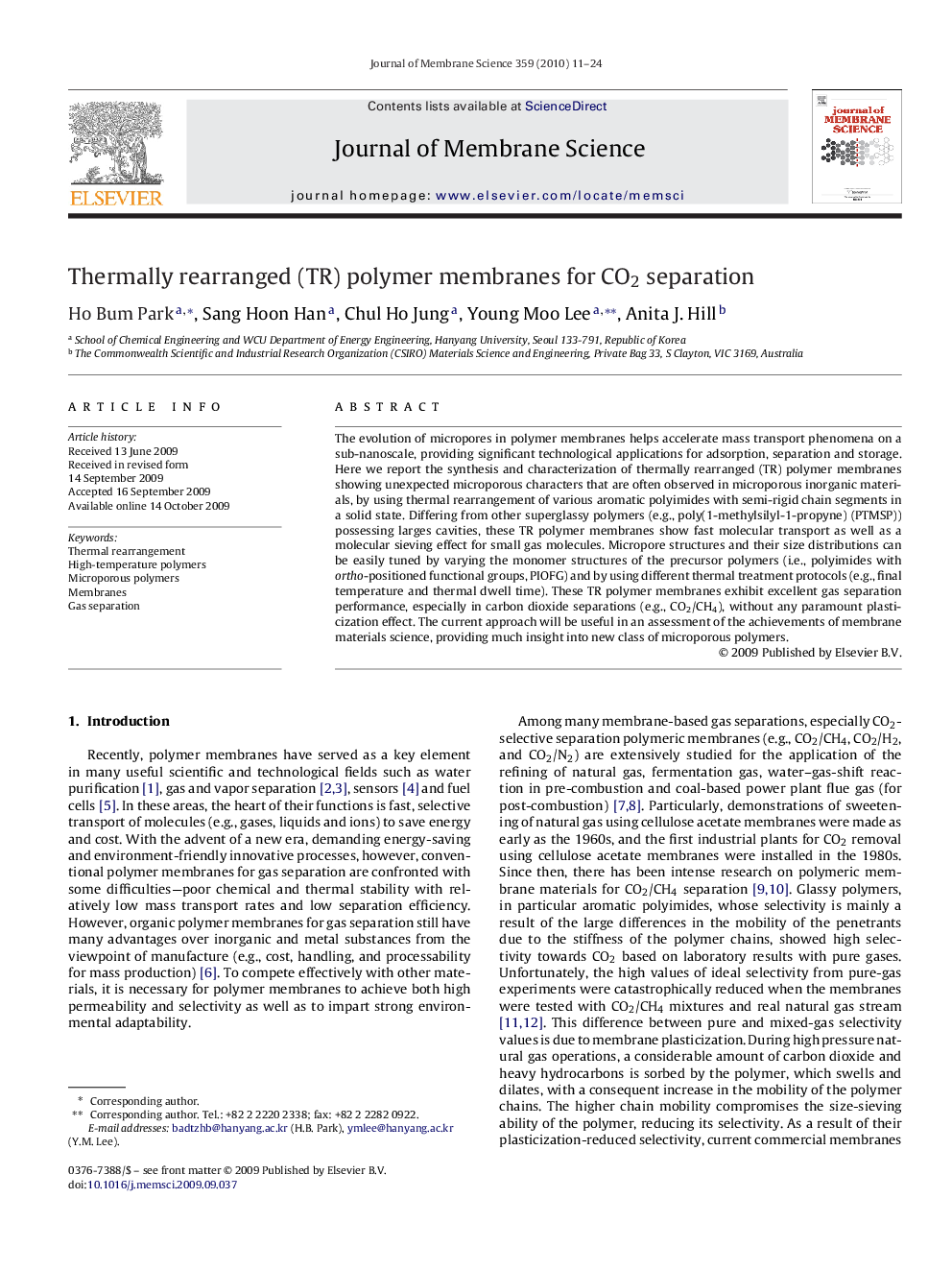| Article ID | Journal | Published Year | Pages | File Type |
|---|---|---|---|---|
| 636339 | Journal of Membrane Science | 2010 | 14 Pages |
The evolution of micropores in polymer membranes helps accelerate mass transport phenomena on a sub-nanoscale, providing significant technological applications for adsorption, separation and storage. Here we report the synthesis and characterization of thermally rearranged (TR) polymer membranes showing unexpected microporous characters that are often observed in microporous inorganic materials, by using thermal rearrangement of various aromatic polyimides with semi-rigid chain segments in a solid state. Differing from other superglassy polymers (e.g., poly(1-methylsilyl-1-propyne) (PTMSP)) possessing larges cavities, these TR polymer membranes show fast molecular transport as well as a molecular sieving effect for small gas molecules. Micropore structures and their size distributions can be easily tuned by varying the monomer structures of the precursor polymers (i.e., polyimides with ortho-positioned functional groups, PIOFG) and by using different thermal treatment protocols (e.g., final temperature and thermal dwell time). These TR polymer membranes exhibit excellent gas separation performance, especially in carbon dioxide separations (e.g., CO2/CH4), without any paramount plasticization effect. The current approach will be useful in an assessment of the achievements of membrane materials science, providing much insight into new class of microporous polymers.
